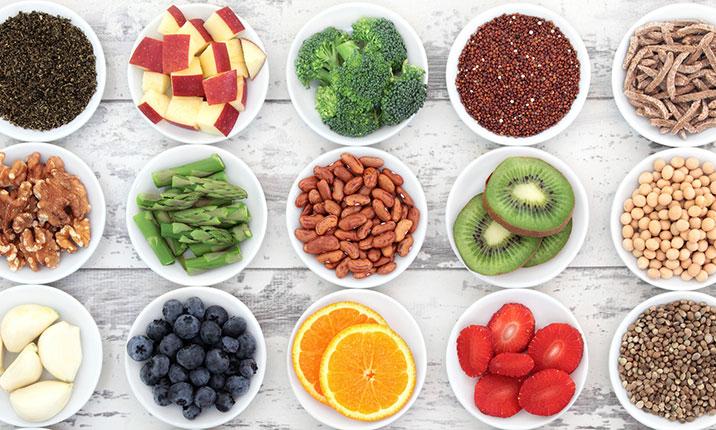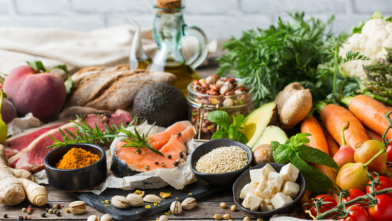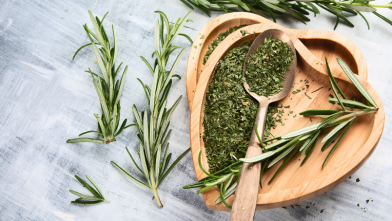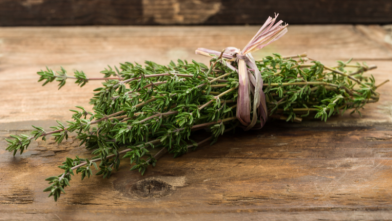Pick up any health magazine today, and you’ll probably come across a list of “superfoods.” This is a common term in today’s world…but what does it actually mean? And can superfoods be helpful for people with diabetes?
What is a Diabetes Superfood?
Our definition of a Diabetes Superfood is simple: any food that (1) is rich in nutrients that benefit diabetes management or (2) is rich in nutrients that are typically lacking in the American diet. Not surprisingly, most of these superfoods are fruits and vegetables – they are the best “bang for your buck” when it comes to nutrition. We’ve highlighted a few varieties below, but don’t let this list limit you – all fruits and vegetables truly are superfoods!
Berries
Strawberries, blackberries, raspberries, blueberries, and cranberries…these little gems are packed with antioxidants, which are cancer-fighting molecules that can remove harmful agents from the body. Berries are also a great source of fiber and lower in carbohydrates than other fruits. We like them fresh, but they can be enjoyed frozen (great in smoothies) or in dried form as a tasty snack.
Cruciferous Vegetables
This variety of nutrient-dense veggies includes cauliflower, broccoli, Brussels sprouts, cabbage, bok choy, and more. Cruciferous veggies are rich in fiber, phytochemicals, vitamins, and minerals. What are phytochemicals, you ask? They are chemical compounds found in plants that are not vitamins and minerals but have been associated with positive effects on health, such as reduced risk for cancer and heart disease.
Dark Leafy Greens
Spinach, collards, kale, romaine lettuce, mustard greens, watercress, and swiss chard...these nutrient powerhouses provide vitamin C, fiber, folic acid, potassium, magnesium, and iron. They are also very low in carbohydrate so the headline here is to eat more! Pair them with other superfoods to create delicious salads, sandwiches, pasta dishes, omelets, or soups.
Fish High in Omega-3 Fatty Acids
We love fish as a healthy protein option, and the American Diabetes Association recommends that most people eat fish at least two to three times per week. Some fish are packed with nutrients called omega-3 fatty acids, which play a role in heart and brain health. Fish and seafood high in omega-3 fatty acids include salmon, trout, sardines, anchovies, herring, Pacific oysters, and Atlantic and Pacific mackerel. In addition to healthy fats, fish also provide vitamin D and calcium.
Legumes – Beans, Peas, and Lentils
These budget-friendly, plant-based proteins are a great choice at mealtime! Legumes also include bean-based foods like hummus, edamame, and soy products. For 1/2 cup of beans, keep in mind that you get about 15–20 grams of carbohydrate, but you also meet approximately 1/3 of your daily fiber needs. When you eat beans, you will also enjoy a boost of magnesium, folate, potassium, and iron.
Now, let’s put these superfoods to work! These are some of our favorite recipes featuring superfoods from our new book, Diabetes Superfoods Cookbook and Meal Planner:
Garbanzo Bean and Arugula Salad
This salad combine dark leafy greens, beans, and tomatoes for a powerhouse superfood salad that uses only 4 ingredients and takes only minutes to prepare.
Lemon Raspberry Chia Seed Pudding
This "pudding" is a unique snack or dessert that is simple to make and beautiful to serve. Featuring 3 superfoods, chia seeds, citrus juice, and raspberries, it packs omega-3 fatty acids and fiber.
Salmon with Mango and Tomato Salsa
For a superfoods dinner, serve up this entre that pairs omega-3 fatty acid rich salmon with a fresh fruit salsa creating a delicious blend of spicy and sweet that is perfect for a quick weeknight meal.
Find these recipes and more, along with a 40-day meal plan in the new cookbook, Diabetes Superfoods Cookbook and Meal Planner. To order directly from the American Diabetes Association, click here.








